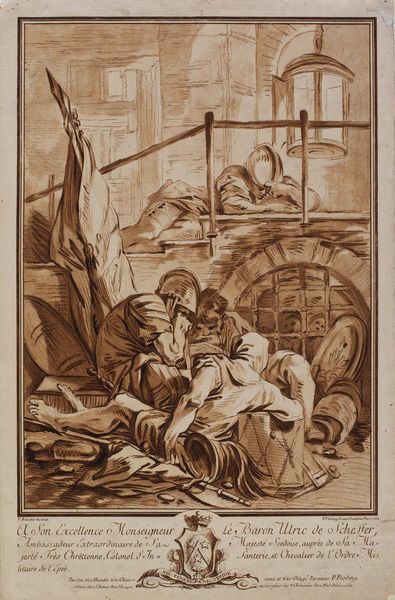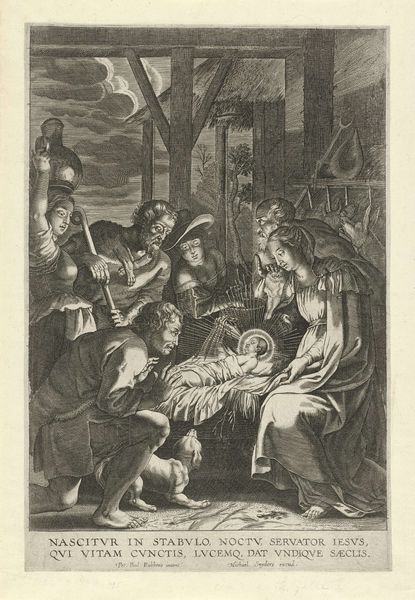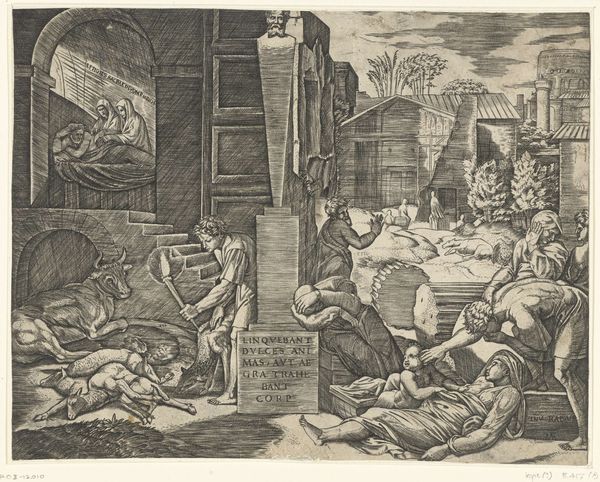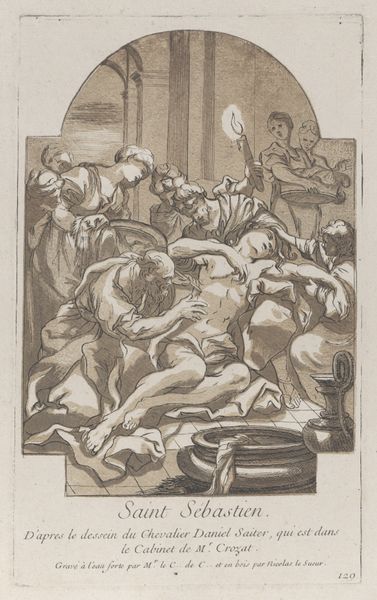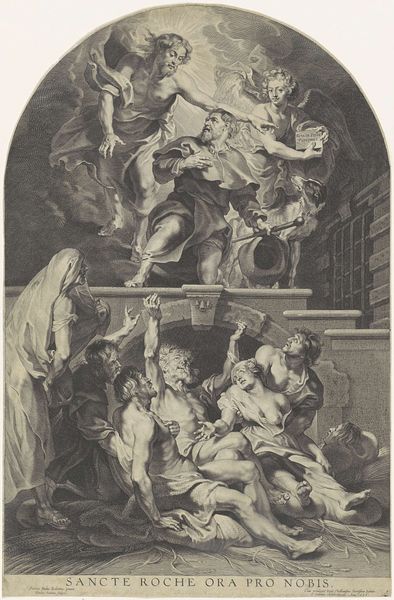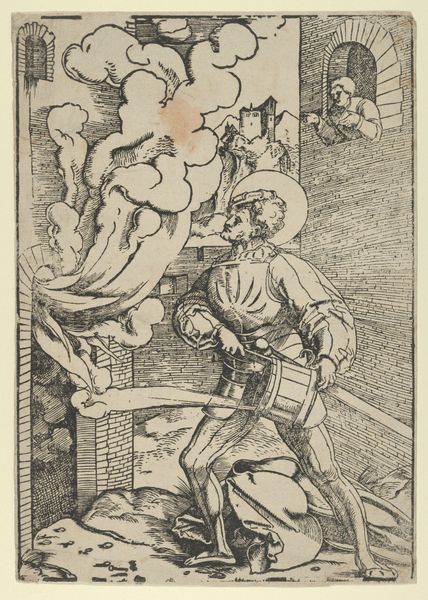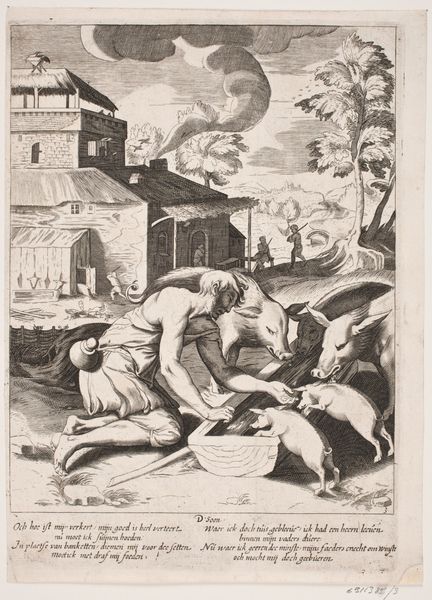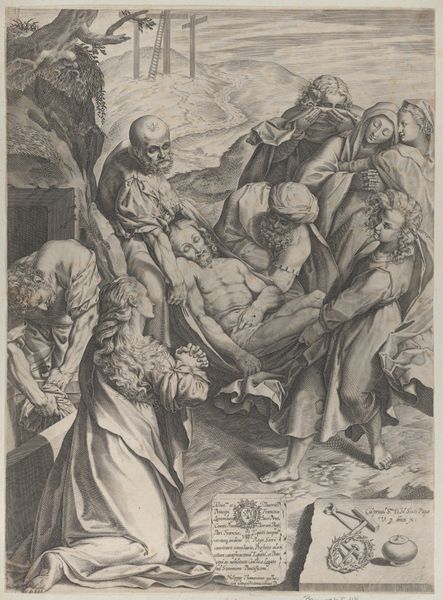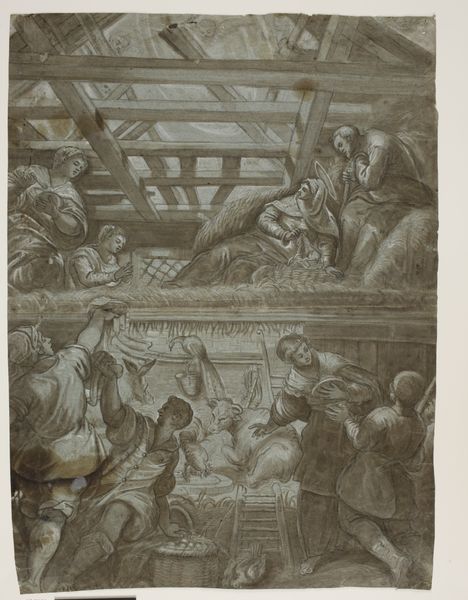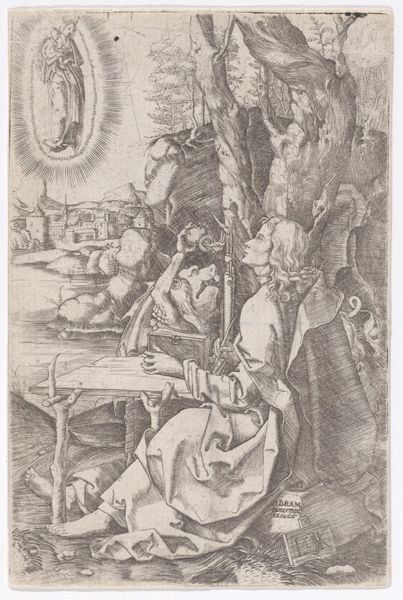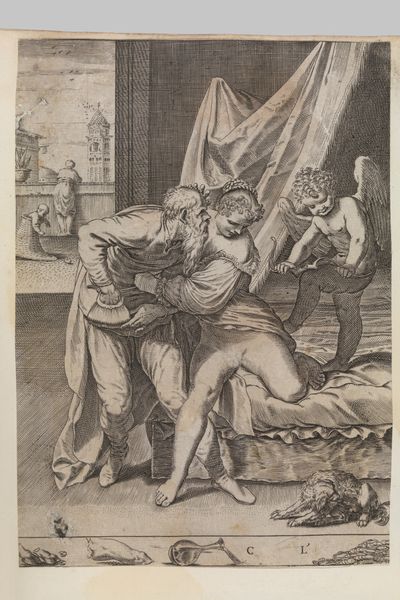
Dimensions: 12 13/16 x 9 3/8 in. (32.54 x 23.81 cm) (plate)15 1/2 x 10 3/16 in. (39.37 x 25.88 cm) (sheet)
Copyright: Public Domain
Per Gustav Floding made this print, Un Corps de Garde, using etching and engraving, techniques that allow for the creation of detailed, reproducible images on paper. The image is made of lines incised into a metal plate. The plate is inked, and then pressed against paper. The result is a network of fine lines that capture the despondency and exhaustion of soldiers, with a textural richness achieved through the layering of etched and engraved marks. Look closely, and you will see the artist used hatching and cross-hatching to create the illusion of depth and shadow. The choice of printmaking is telling; this was a medium of reproducibility, used to disseminate images widely during the 18th century. In this case, the print served as a dedication to a nobleman. But the choice of such a debased subject matter for such a purpose tells us that the social function of art could be complex, even contradictory. This image reminds us that even the most elevated social commissions are always grounded in the realities of labor and class.
Comments
minneapolisinstituteofart almost 2 years ago
⋮
In the 18th century, France and Sweden were strong military allies, and upperclass Swedes adopted French artistic trends. Born in Stockholm, Per Gustav Floding was sent to Paris as a young man to learn the art of engraving. He remained there for most of his career but retained close ties to his homeland. King Adolf Frederick was so pleased with a portrait that Floding made of him that he gave the artist money to re-equip his studio. This led directly to Floding’s invention of a new printmaking technique, lavis aquatint. The technique involved covering the copper printing plate with powdered resin, heating it to make it adhere, and then subjecting it to repeated acid baths while selectively applying protective coatings between the successive immersions. The result is a field of minute dots of various sizes, which simulate the effect of dilute ink washes when printed. As we see here, various effects could be achieved by printing the plate in various colors. Un Corps de garde is one of Floding’s first productions in his new technique (see also Mia 2002.185.3 and 92.22). It is based on a drawing by François Boucher whose fame gave rise to a veritable industry devoted to reproducing his drawings and paintings. Floding dedicated the image to Ulrik Scheffer, whose military career led to his appointment as a military advisor to the king. We do not know if Scheffer appreciated the irony of having his name attached to a corps of sleeping guardsmen.
Join the conversation
Join millions of artists and users on Artera today and experience the ultimate creative platform.
